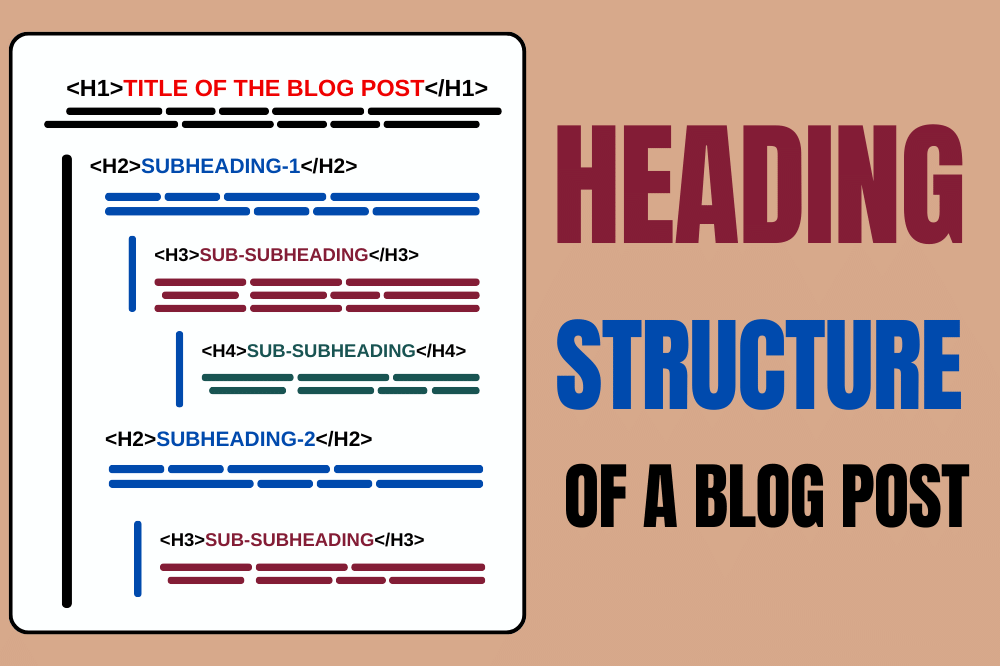
Hey there! Writing a cool blog post is not just about words; it’s also about making your headings pop for Google to notice. The way you structure your headings can make a world of difference, especially when it comes to Search Engine Optimization (SEO). In this article, we’ll explore the significance of heading structures, knowing why they matter, how they play a crucial role in helping Google understand your content, and the diverse types of headings that can add flair to your blog post.
Why Headings Are Important?
Good heading structure makes your article super easy to read. Both people and search engines love that! It’s like putting your thoughts neatly on a shelf. Proper heading structures improve the overall readability of a blog post, making it easier for both readers and search engines to understand the content’s organization. A clear heading structure enhances the user experience by allowing readers to quickly scan and navigate through the content. This results in increased engagement and a lower bounce rate, positively influencing SEO rankings. Readers usually do not read your all text but they quickly skim through your post, and that tell the reader this stuff is useful or not.
How Heading Structure Helps Google?
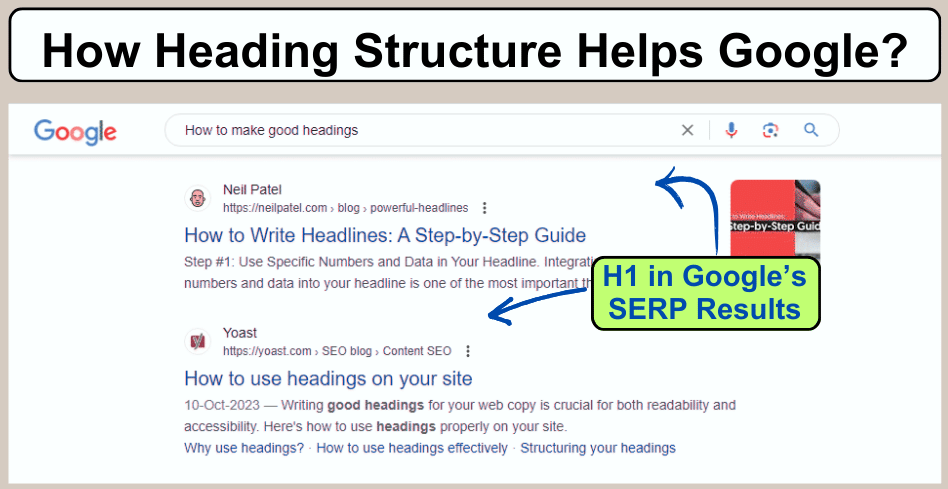
Google needs a roadmap to understand what your blog is all about. A well-structured heading not only keeps your audience engaged but also communicates to search engines that your content is organized, making it more likely to be ranked higher in search results. Search engines, like Google, rely heavily on heading structures to comprehend the hierarchy and context of the content. Well-organized heading structure signal the relevance and coherence of the information to search engine algorithms.
Role of Headings and Subheadings in SEO:
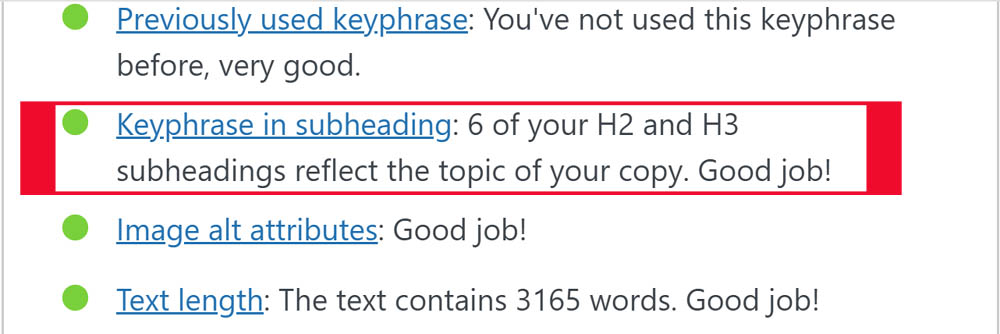
When you do search engine optimization of your blog post, you try to place your keywords in your headings. Therefore, headings are a sneaky way to use important keywords. This tells Google, “Hey, my blog is all about this cool stuff!” Thus, headings provide a unique opportunity to incorporate essential keywords, boosting your content’s visibility on search engines.
Heading Structure and Types:
Generally, we divide headings into six types: H1, H2, H3, H4, H5, and H6. Understanding the types of headings is like mastering the art of storytelling. The H1 tag, your main title, while H2 and H3 tags break down the narrative into digestible sections. H4 to H6 tags, like characters in a story, offer intricate details and nuances, providing depth to your content.
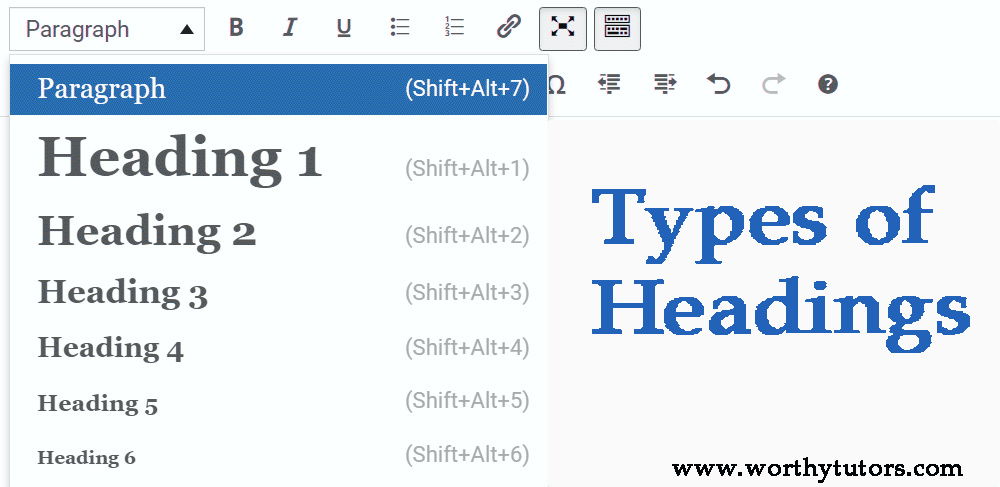
We will explain the main differences between these heading for your comprehension.
H1 – The Primary Heading:
The H1 tag represents the main title of the blog post. It’s the headline that tells everyone what your article is about. It should succinctly convey the primary topic and include relevant keywords to capture the essence of the content. When search engines like Google show content on SERP in response of any query, they show your H1 with meta-description. Usually recommended length of H1 is 50 to 60 characters because search engines show up to 60 words only on SERP.
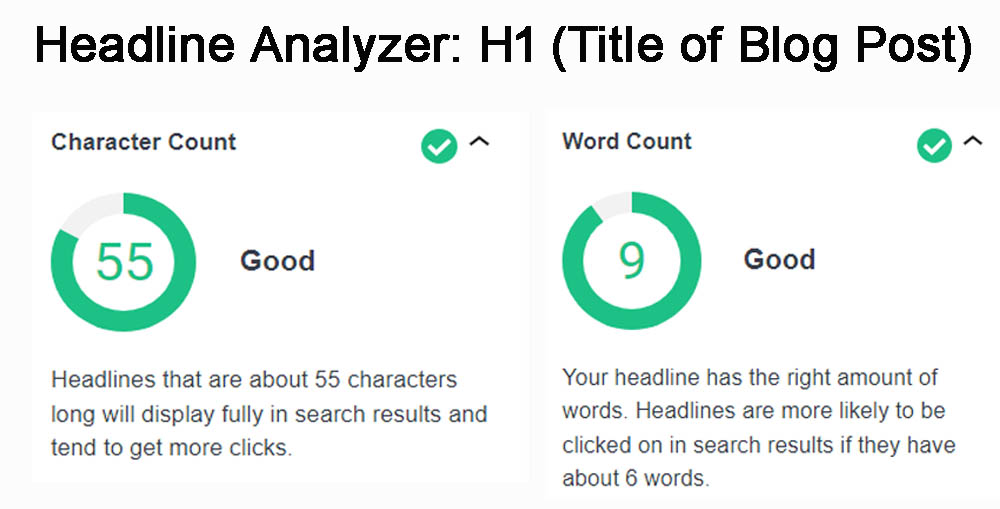
H2 – Subheadings:
H2 tags denote subheadings within the content. They break down the main topic into key sections, each contributing to the overall narrative. Incorporating relevant keywords in H2 tags further strengthens the SEO strategy. Readability tools like Yoest SEO recommends subheadings to improve readability score of a blog post.
H3 – Sub-Subheadings:
Going a step further, H3 tags are employed to create sub-subheadings. These add another layer of organization, helping readers and search engines understand the finer details of the content.
H4 to H6 – Granular Detailing:
H4, H5, and H6 are subsequent smaller text divisions that are utilized for even more granular detailing within the content. While not used as frequently, they play a crucial role in structuring complex information and maintaining hierarchy. These tags are like your superheroes, zooming in on the nitty-gritty details. Use them when you need to break things down even further.
How to Break Down Your Article into Headings:
Start by choosing the big sections of your article. These will be your H2 headings. Easy, right? Break down each big section into smaller, bite-sized pieces. These become your H3 headings. Keep it simple and focused. For the tiny details, like extra tips or examples, use H4 to H6. These keep your article organized without making it too overwhelming.
Identify Key Sections:
Begin by identifying the main sections of your article. These will serve as the basis for your H2 headings.
Subdivide Sections:
Break down each section into smaller, thematic sub-sections. These will become your H3 headings.
Granular Detailing:
For particularly detailed content, use H4 to H6 headings to further categorize and structure information.
Conclusion
In the world of blogging and SEO, a smart heading structure is your secret weapon. It’s not just about making your blog look good but also about telling Google, “Hey, I’ve got the best stuff here!” So, have fun with your headings, keep them simple, and watch your blog post shine in the online spotlight! Remember, well-crafted headings are not just for show – they’re your ticket to getting noticed and spreading your knowledge far and wide. Happy blogging!
Learn Content Writing, Blogging, & SEO
Introduction to Blogging
How to Start Blogging
Scope of Content Writing
Different Forms of Content Writing
Types of SEO
Keyword Research Strategies
Blogging & Content Writing Terms
How to Make Title of a Blog Post?
How to Improve Readability Score?
Heading Structure of a Blog Post